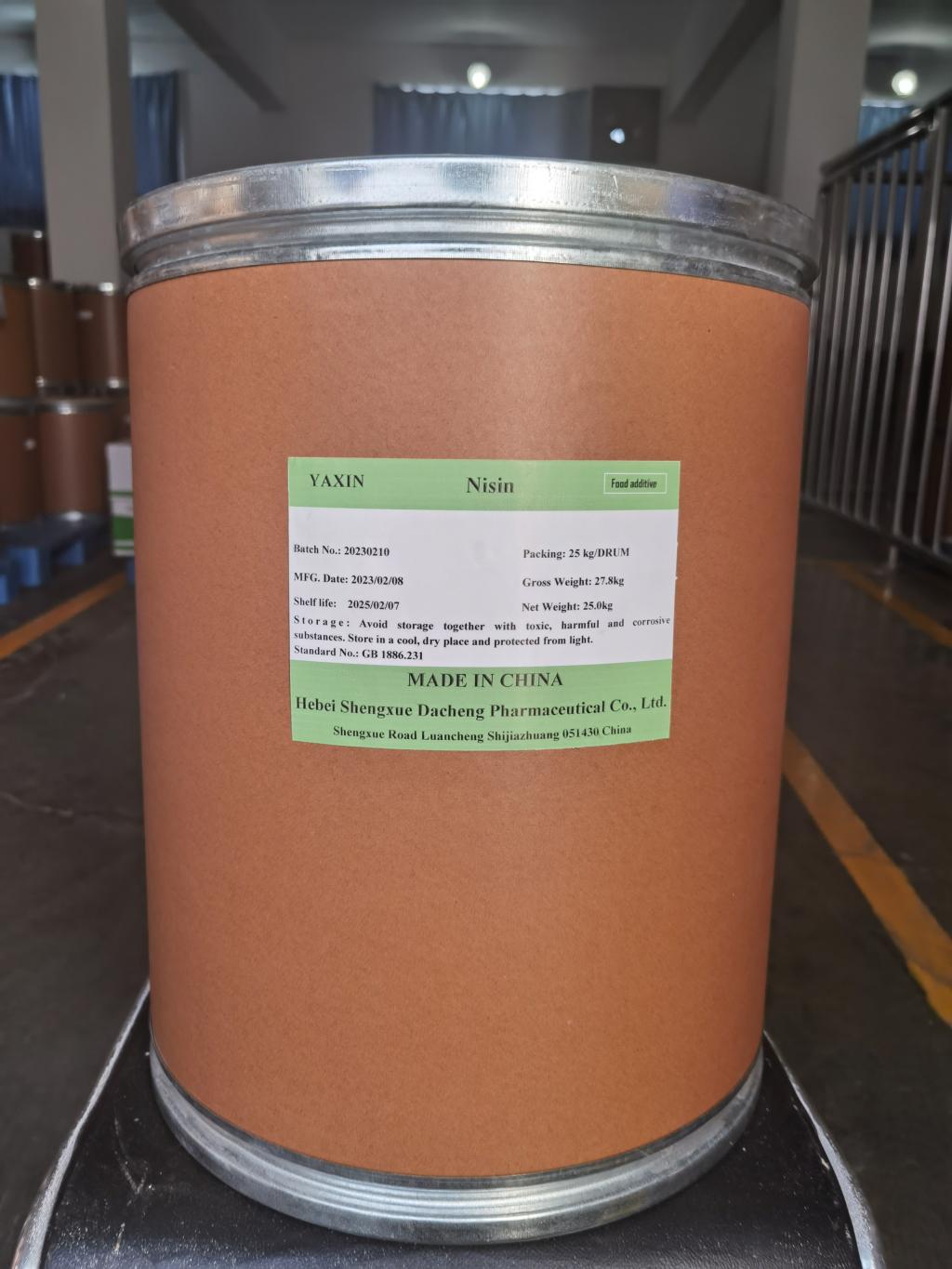Tel:+8618231198596

News
 CONTACT
CONTACT
 CONTACT
CONTACT
- Linkman:Linda Yao
- Tel: +8618231198596
- Email:linda.yao@dcpharma.cn
- Linkman:CHARLES.WANG
- Department:Overseas
- Tel: 0086 0311-85537378 0086 0311-85539701
News
Current Position:
Home >
News
>Can Nisin be used in the preservation of fermented sauces or condiments?
Can Nisin be used in the preservation of fermented sauces or condiments?
TIME:2023-06-19
Understanding Fermented Sauces and Condiments:
Fermented sauces and condiments are products obtained through the fermentation of ingredients such as soybeans, fish, or vegetables. The fermentation process involves the growth of beneficial microorganisms that produce enzymes and organic acids, enhancing flavors and aroma profiles. However, the high moisture content and nutrient availability in these products can also support the growth of spoilage microorganisms, reducing their shelf life.
Nisin as an Antimicrobial Agent:
Nisin is a natural antimicrobial peptide produced by the bacterium Lactococcus lactis. It is recognized as a Generally Recognized as Safe (GRAS) substance and has been extensively studied for its antimicrobial properties. Nisin exhibits strong inhibitory effects against Gram-positive bacteria, including many foodborne pathogens. Its mode of action involves disrupting the cell membranes of target bacteria, leading to cell death. These attributes make nisin a promising candidate for preserving fermented sauces and condiments.
Preservation Challenges in Fermented Sauces and Condiments:
Fermented sauces and condiments can be prone to spoilage due to the presence of microorganisms that can cause off-flavors, texture changes, and product degradation. Common spoilage microorganisms in these products include yeasts, molds, and lactic acid bacteria. Traditional preservation methods, such as pasteurization, may alter the flavor profiles and degrade the nutritional value of fermented sauces and condiments. Therefore, alternative preservation strategies, like the use of natural antimicrobial agents, are being explored.
Application of Nisin in Soy Sauce Preservation:
Soy sauce is a popular fermented condiment made from soybeans, wheat, and salt. The fermentation process involves the growth of Aspergillus oryzae molds and lactic acid bacteria, which contribute to the development of unique flavors and aromas. However, soy sauce can be susceptible to spoilage by yeasts and molds during storage. Studies have investigated the use of nisin to inhibit the growth of spoilage microorganisms in soy sauce, demonstrating its effectiveness in extending shelf life while maintaining product quality.
Nisin's Role in Fish Sauce Preservation:
Fish sauce is a fermented condiment made from fish or seafood and salt. The fermentation process involves the growth of halophilic microorganisms, including lactic acid bacteria and yeasts. However, fish sauce can be susceptible to the growth of spoilage microorganisms, leading to off-flavors and reduced shelf life. Research has explored the potential of nisin in inhibiting the growth of spoilage bacteria and yeasts in fish sauce, demonstrating its ability to enhance preservation and maintain product quality.
Safety Considerations:
Nisin has a long history of safe use in the food industry, and extensive toxicological studies have confirmed its low toxicity and minimal impact on human health. However, it is important to adhere to regulatory guidelines and ensure appropriate usage levels to maintain product safety. Manufacturers should also conduct thorough testing to evaluate the compatibility of nisin with other ingredients and assess any potential sensory changes in the preserved fermented sauces and condiments.
Consumer Acceptance and Labeling:
Consumer acceptance of nisin as a natural preservative in fermented sauces and condiments is crucial. Transparent labeling practices that clearly communicate the presence of nisin and its role in preserving product quality can help build consumer trust. Informing consumers about the natural origin and safety of nisin can address any concerns and foster acceptance of its use in these traditional food products.
Future Perspectives:
While the application of nisin in the preservation of fermented sauces and condiments shows promise, further research is needed to optimize its usage. This includes determining the most effective concentration of nisin, evaluating its interaction with specific spoilage microorganisms, and assessing its impact on sensory attributes and the overall quality of the products. Collaborative efforts between researchers, manufacturers, and regulatory bodies will facilitate the development of guidelines and best practices for utilizing nisin as a preservative in fermented sauces and condiments.
Conclusion:
Nisin holds significant potential as a natural antimicrobial agent for preserving fermented sauces and condiments such as soy sauce and fish sauce. Its antimicrobial properties make it effective in inhibiting the growth of spoilage microorganisms, extending the shelf life, and maintaining the quality of these traditional food products. However, further research and development are necessary to optimize its application, ensure product safety, and gain consumer acceptance. By harnessing the benefits of nisin, fermented sauces and condiments can be preserved effectively while maintaining their unique flavors and cultural significance.
- Tel:+8618231198596
- Whatsapp:18231198596
- Chat With Skype







